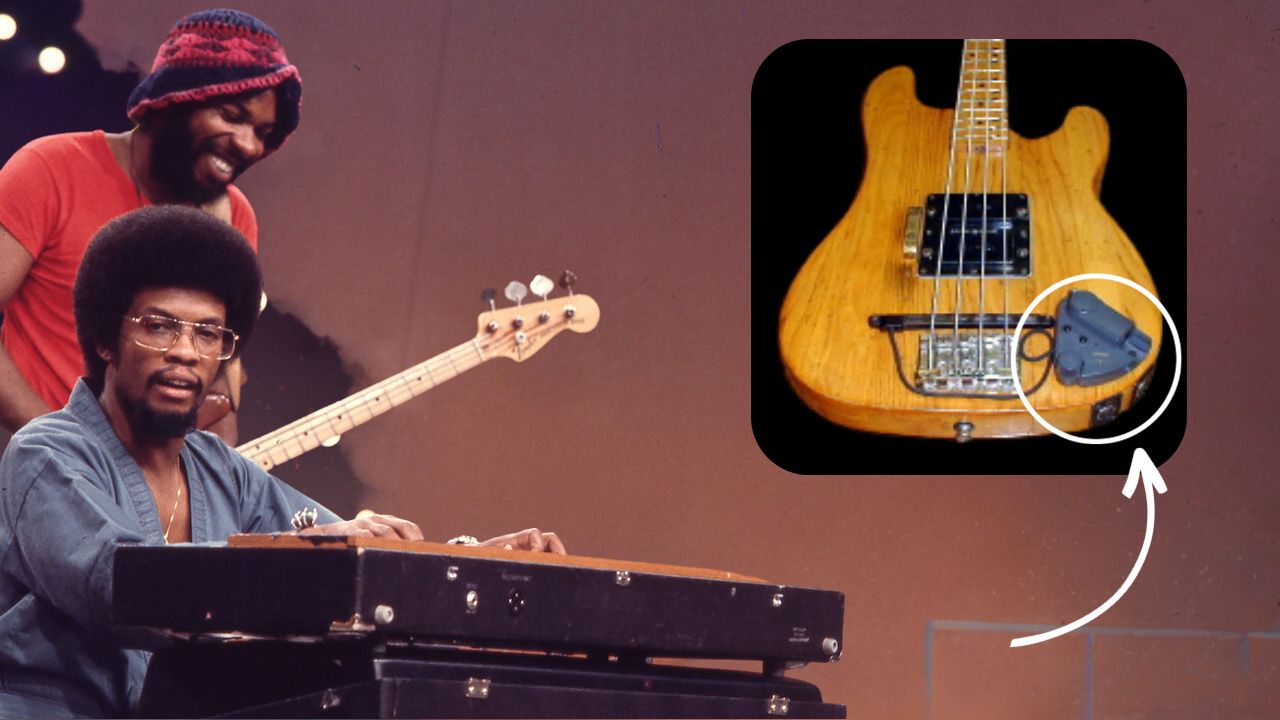
Along with Weather Report's Birdland, Deep Purple’s Smoke on the Water, and Pink Floyd's Another Brick in the Wall, one of the most mesmerizing bass guitar riffs of the 1970s is that of Herbie Hancock's Watermelon Man from his 1973 album Head Hunters.
Penned by Hancock, Watermelon Man first became a hit when Cuban percussionist Mongo Santamaria released his Latinized take of the tune in 1962, igniting the boogaloo craze of the 1960s. When Hancock recorded a grooving bop version for his own solo debut, Takin’ Off, he called on bassist Butch Warren to hold down the sparse groove, a 16-bar blues in F.
Fast-forward to 1973 and Head Hunters, the first of Hancock's funk forays on Columbia (followed by 1974's Thrust, 1975's Manchild, and 1976's Secrets), featured the late Paul Jackson on bass. The record's infectious fusion made it the best-selling jazz album of its time. On it, the deep grooves of drummer Harvey Mason and percussionist Bill Summers were treated to some big-bottom stank, courtesy of Jackson and his blonde Fender Telecaster Bass, Geraldine.
Jackson's interest in the bass came from his musical family. His father was an amateur piano player, and at age eight, the young bassist-to-be was struck by Paul Chambers with the Miles Davis Quintet. As he started learning to master the upright bass, he came to further revelations.
“My whole electric approach is based on the way I play upright,” Jackson told BP. “I used to play in an 18-piece big band through a little amplifier, and I had to play real hard to be heard. So I tend to rely more on my hands than on any kind of trick. I never try to play thumbstyle or anything like that. It's not that I don't like it, I just enjoy the way I play, fingerpicking. I can get loads of sounds that way.”
Head Hunters’ re-arrangement of Watermelon Man saw the band chop the original tempo almost in half and funkify it with a 16th-note groove. For his part, Jackson employed 10ths to build one of the most recognisable sub-hooks in jazz.
Percussionist Bill Summers introduces the song by blowing across the top of a beer bottle, but Jackson soon latches onto it and makes the groove his own. Note: The first time through the form, the band sits on the I chord, F, where the blues would normally go to IV, Bb. The second and third time through, Jackson lands on the IV chord. On these chords, Jackson sticks with the double stop 10th motif before delivering a devastatingly funky fill to lead into the bridge vamp.
Hancock’s band, which also included reedman Bennie Maupin, percussionist Bill Summers, and drummer Harvey Mason (later replaced by Mike Clark), was highly influential in the budding fusion movement. “A lot of bass players wanted the job,” said Jackson. “I got a call to play a session with the Pointer Sisters, and at that time Herbie had the same manager. He asked me to audition, and I was called back after about three weeks."
Although Hancock pursued new paths after a few years, Jackson, Maupin, and Clark continued on their own as the Headhunters, with Jackson and Clark becoming one of the all time classic rhythm teams.
The duo met at a 1968 organ-trio jazz gig Clark was playing. “Paul came in, sat in the audience, smoked cigarettes and looked cool. So I figured he was a musician,” Clark told BP. “I was going to approach him, but he walked out. He just dissed me! So I followed him all the way to the parking lot and asked him to come back in and play. He told me he played bass, but also B3 Hammond organ, and we struck up such a hell of a groove we were dying of laughter.”
After getting ditched by their respective girlfriends on the same day, Jackson and Clark moved into an apartment together, which became a place to jam. “When Paul first brought home a bass, it sat on the floor for about two weeks. Then one day he took it out of the box, plugged it in, and just started playing. I began playing right along. It wasn't like we discussed it first, we just looked at each other and started blowing. We had gigs every night. That's where we engineered a lot of those grooves. It was a fantastic time.”
When Jackson was with Herbie Hancock, he used a Fender Telecaster bass that was modified by a Chinese violin maker. “He had four of what they now called Bartolini pickups, but when I bought them they were called Hi-A’s. It had no volume or tone controls, but it had four channels with a separate output for each string. I had four Polytone amps; two with 12-inch speakers and two with 15's, which allowed me to balance each string. I really liked the concept, but it was a bit impractical having to carry around all of that equipment.”
As you shed this, and other tunes featuring 10ths, like Lou Reed's Walk on the Wild Side, Jane's Addiction's Summertime Rolls, or Pleasure's Glide, remember that Jackson's liberal use of the technique was out of the ordinary. Like any ear tweaking musical move, it's a gesture best posed with restraint!





!["[T]he First and Fifth Amendments Require ICE to Provide Information About the Whereabouts of a Detained Person"](https://images.inkl.com/s3/publisher/cover/212/reason-cover.png?w=600)

